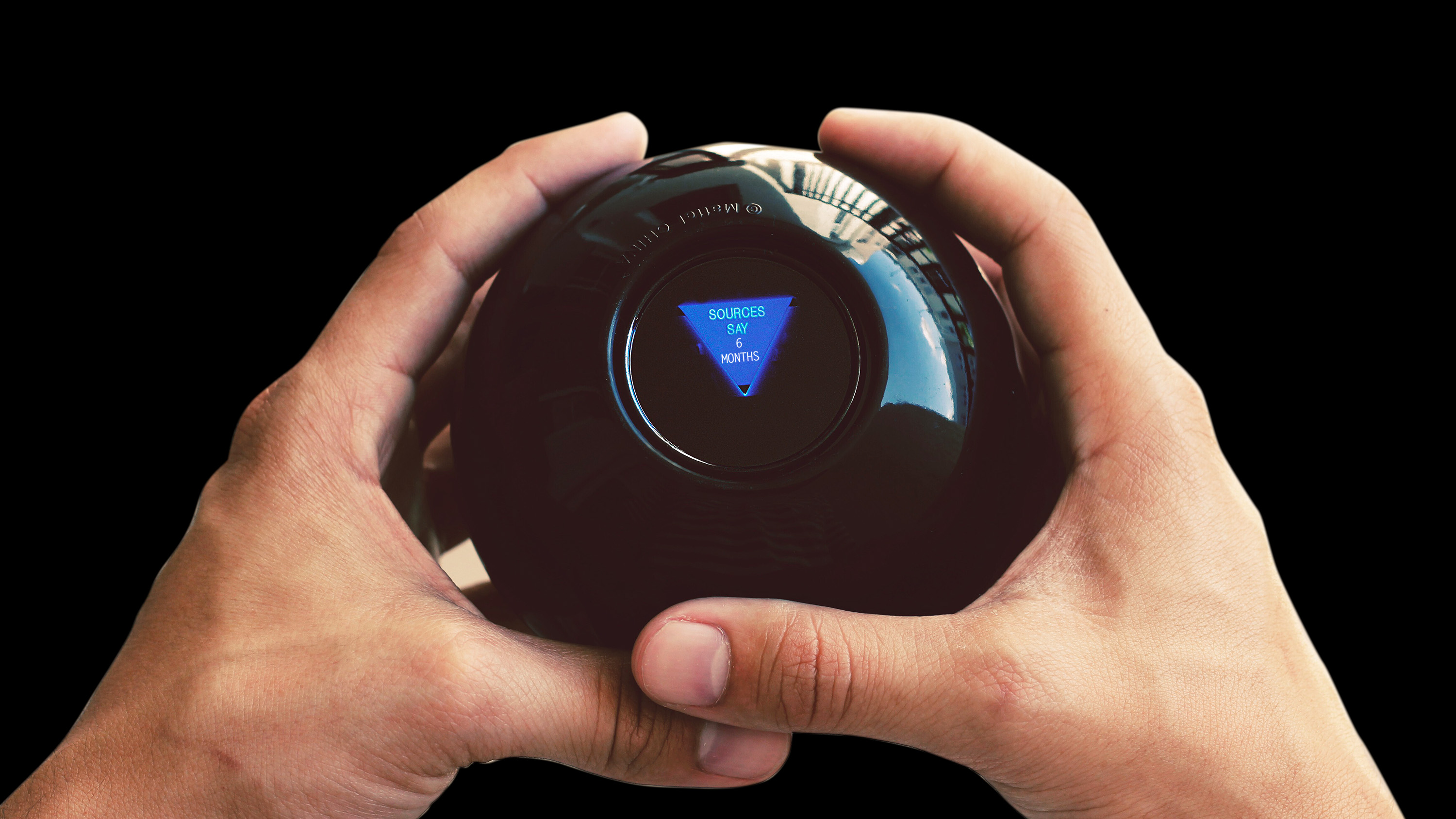What if immunity to covid-19 doesn’t last?

Starting in the fall of 2016 and continuing into 2018, researchers at Columbia University in Manhattan began collecting nasal swabs from 191 children, teachers, and emergency workers, asking them to record when they sneezed or had sore throats. The point was to create a map of common respiratory viruses and their symptoms, and how long people who recovered stayed immune to each one.
The research included four coronaviruses, HKU1, NL63, OC42, and C229E, which circulate widely every year but don’t get much attention because they only cause common colds. But now that a new coronavirus in the same broad family, SARS-CoV-2, has the world on lockdown, information about the mild viruses is among our clues to how the pandemic might unfold.
What the Columbia researchers now describe in a preliminary report is cause for concern. They found that people frequently got reinfected with the same coronavirus, even in the same year, and sometimes more than once. Over a year and a half, a dozen of the volunteers tested positive two or three times for the same virus, in one case with just four weeks between positive results.
That’s a stark difference from the pattern with infections like measles or chicken pox, where people who recover can expect to be immune for life.
For the coronaviruses “immunity seems to wane quickly,” says Jeffrey Shaman, who carried out the research with Marta Galanti, a postdoctoral researcher.

Whether covid-19 will follow the same pattern is unknown, but the Columbia results suggest one way that much of the public discussion about the pandemic could be misleading. There is talk of getting “past the peak” and “immunity passports” for those who’ve recovered. At the same time, some hope the infection is more widespread than generally known, and that only a tolerable death total stands between us and high enough levels of population immunity for the virus to stop spreading.
All that presumes immunity is long-lived, but what if it is fleeting instead?
“What I have been telling everyone—and no one believes me, but it’s true—is we get coronaviruses every winter even though we’re seroconverted,” says Matthew Frieman, who studies the virus family at the University of Maryland. That is, even though most people have previously developed antibodies to them, they get the viruses again. “We really don’t understand whether it is a change in the virus over time or antibodies that don’t protect from infection,” he says.
Critical factor
We’re currently in the pandemic phase. That’s when a new virus, which humans are entirely susceptible to, rockets around the planet. And humanity is still a greenfield for covid-19—as of April 26, there were about three million confirmed cases, or one in 2,500 people on the planet. (Even though the true number of infections is undoubtedly higher, it's still probably only a small fraction of the population.) Takeshi Kasai, the World Health Organization's regional director for the Western Pacific, recently warned that until a vaccine is available, the world should get ready for a “new way of living.”
More on coronavirus
Our most essential coverage of covid-19 is free, including:
How does the coronavirus work?
What are the potential treatments?
What's the right way to do social distancing?
Other frequently asked questions about coronavirus
---
Newsletter: Coronavirus Tech Report
Zoom show: Radio Corona
See also:
Please click here to subscribe and support our non-profit journalism.
Further out, though, changes like social distancing or grounding airline flights may not be the biggest factor in our fate. Whether or not people acquire immunity to the virus, and for how long, will be what finally determines the toll of the disease, some researchers say.
Early evidence points to at least temporary protection against reinfection. Since the first cases were described in China in December, there has been no cut-and-dried case of someone being infected twice. While some people, including in South Korea, have tested positive a second time, that could be due to testing errors or persistence of the virus in their bodies.
“There are a lot of people who were infected and survived, and they are walking around, and they don’t seem to be getting reinfected or infecting other people,” says Mark Davis, a researcher at Stanford University. As of April 26, more than 800,000 people had officially recovered from the disease, according to the Johns Hopkins case-tracking dashboard.
Researchers in China also tested directly whether macaque monkeys resisted a second exposure to the new coronavirus. They infected the monkeys with the virus, and then four weeks later, after they recovered, tried again. The second time, the monkeys didn’t develop symptoms, and researchers couldn’t find any virus in their throats.
What’s unknown is how long immunity lasts—and only five months into the outbreak, there is no way to know. If it’s for life, then every survivor will add to a permanent bulwark against the pathogen’s spread. But if immunity is short, as it is for the common coronaviruses, covid-19 could set itself up as a seasonal superflu with a high fatality rate—one that emerges in a nasty wave winter after winter.
The latest computer models of the pandemic find that the duration of immunity will be a key factor, and maybe the critical one. One model, from Harvard University and published in Science, shows the covid-19 virus becoming seasonal—that is, staging a winter resurgence every year or two as immunity in the population builds up and then ebbs away.
After testing different scenarios, the Harvard group concluded that their projections of how many people end up getting covid-19 in the coming years depended “most crucially” on “the extent of population immunity, whether immunity wanes, and at what rate.” In other words, the critical factor in projecting the path of the outbreak is also a total unknown.
Seasonal virus
Because so many other human coronaviruses are mild, they haven’t gotten the same attention as influenza, a shape-shifting virus that is closely followed and genetically analyzed to create a new vaccine each year. But it’s not even known, for instance, whether the common coronaviruses mutate in ways that let them evade the immune system, or whether there are other reasons immunity is so short-lived.
“There is no global surveillance of coronavirus,” says Burtram Fielding, a virologist at the University of the Western Cape, in South Africa, who tracks scientific reports in the field. “Even though the common cold costs the US $20 billion a year, these viruses don’t kill, and anything that does not kill, we don’t have surveillance for.”
The Global Virome Project in Manhattan, led by Shaman with funding from the Defense Department, has been an exception. It set out to detect respiratory viruses with the eventual aim of “nowcasting,” or having a live tracker on common infections circulating in the city.
One finding of the research is that people who got the same coronavirus twice didn’t have fewer symptoms the second time. Instead, some people never got symptoms at all; others had bad colds two or three times. Shaman says the severity of infection tended to run in families, suggesting a genetic basis.
The big question is what this fizzling, short-lived resistance to common cold viruses means for covid-19. Is there a chance the disease will turn into a killer version of the common cold, constantly out there, infecting 10% or 20% of the population each year, but also continuing to kill one in a hundred? If so, it would amount to a plague capable of shaving the current rate of world population growth by a tenth.
Some scientists find the question too dark to contemplate. Shaman didn’t want to guess at how covid-19 will behave either. “Basically, we have some unresolved questions,” he wrote in an email. “Are people one and done with this virus? If not, how often will we experience repeat infections? Finally, will those repeat infections be milder, just as severe, or even worse?”
Immune surveys
Big studies of immunity are already under way to try to answer those questions. Germany has plans to survey its population for antibodies to the virus, and in North America, 10,000 players and other employees of Major League Baseball are giving pinprick blood samples for study. In April, the US National Institutes of Health launched the COVID-19 Pandemic Serum Sampling Study, which it says will collect blood from 10,000 people, too.
By checking for antibodies in people’s blood, such serosurveys can determine how many people have been exposed to the virus, including those who had no symptoms or only mild ones.
Researchers will also be scavenging through the blood of covid-19 cases in order to measure the nature and intensity of immune responses, and to figure out if there’s a connection to how sick people got. “What we are seeing right now with the coronavirus is the need for immune monitoring, because some people are shrugging this off and others are dying,” Davis says. “The gradient is serious and no one really understands why.”
Our immune system has different mechanisms for responding to germs we’ve never seen before. Antibodies, made by B cells, coat a virus and don’t let it infect cells. T cells, meanwhile, regulate the immune response or destroy infected cells. Once an infection is past, long-term “memory” versions of either type of cell can form.
What sort of immune memory will covid-19 cause? Stephen Elledge, a geneticist at Harvard University says the severity of the disease could put it in a different category from the ordinary cold. “You might have a cold for a week, whereas if you go through three weeks of hell, that may give you more of a memory for longer,” he says.
Other clues come from the 2002-03 outbreak of SARS, a respiratory infection even more deadly than covid-19. Six years after the SARS outbreak, doctors in Beijing went hunting for an immune response among survivors. They found no antibodies or long-lived memory B cells, but they did find memory T cells.
Because doctors managed to stop the SARS outbreak after about 8,000 cases, there’s never been a chance for anyone to get infected a second time, but those T cells could be a sign of ongoing immunity. A later vaccine study in mice found that memory T cells protected the animals from the worst effects when scientists tried infecting them again with SARS.
To Frieman, at the University of Maryland, all this uncertainty about immune response to coronaviruses means there’s still little chance of predicting when, or how, the outbreak ends. “I don’t know when this goes away, and if anyone says they know, they don’t know what they are talking about,” he says.
Deep Dive
Biotechnology and health
How scientists traced a mysterious covid case back to six toilets
When wastewater surveillance turns into a hunt for a single infected individual, the ethics get tricky.
An AI-driven “factory of drugs” claims to have hit a big milestone
Insilico is part of a wave of companies betting on AI as the "next amazing revolution" in biology
The quest to legitimize longevity medicine
Longevity clinics offer a mix of services that largely cater to the wealthy. Now there’s a push to establish their work as a credible medical field.
There is a new most expensive drug in the world. Price tag: $4.25 million
But will the latest gene therapy suffer the curse of the costliest drug?
Stay connected
Get the latest updates from
MIT Technology Review
Discover special offers, top stories, upcoming events, and more.